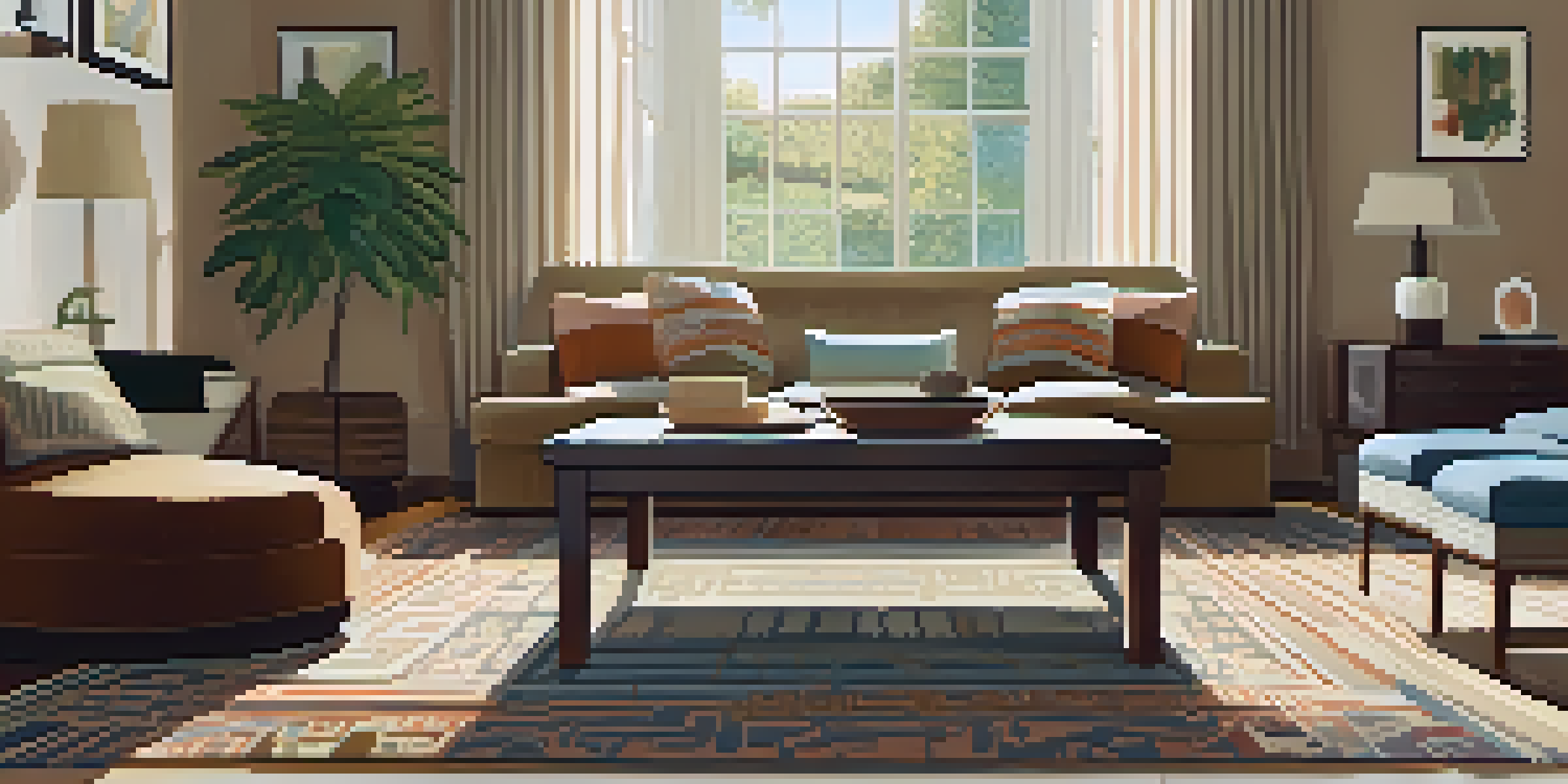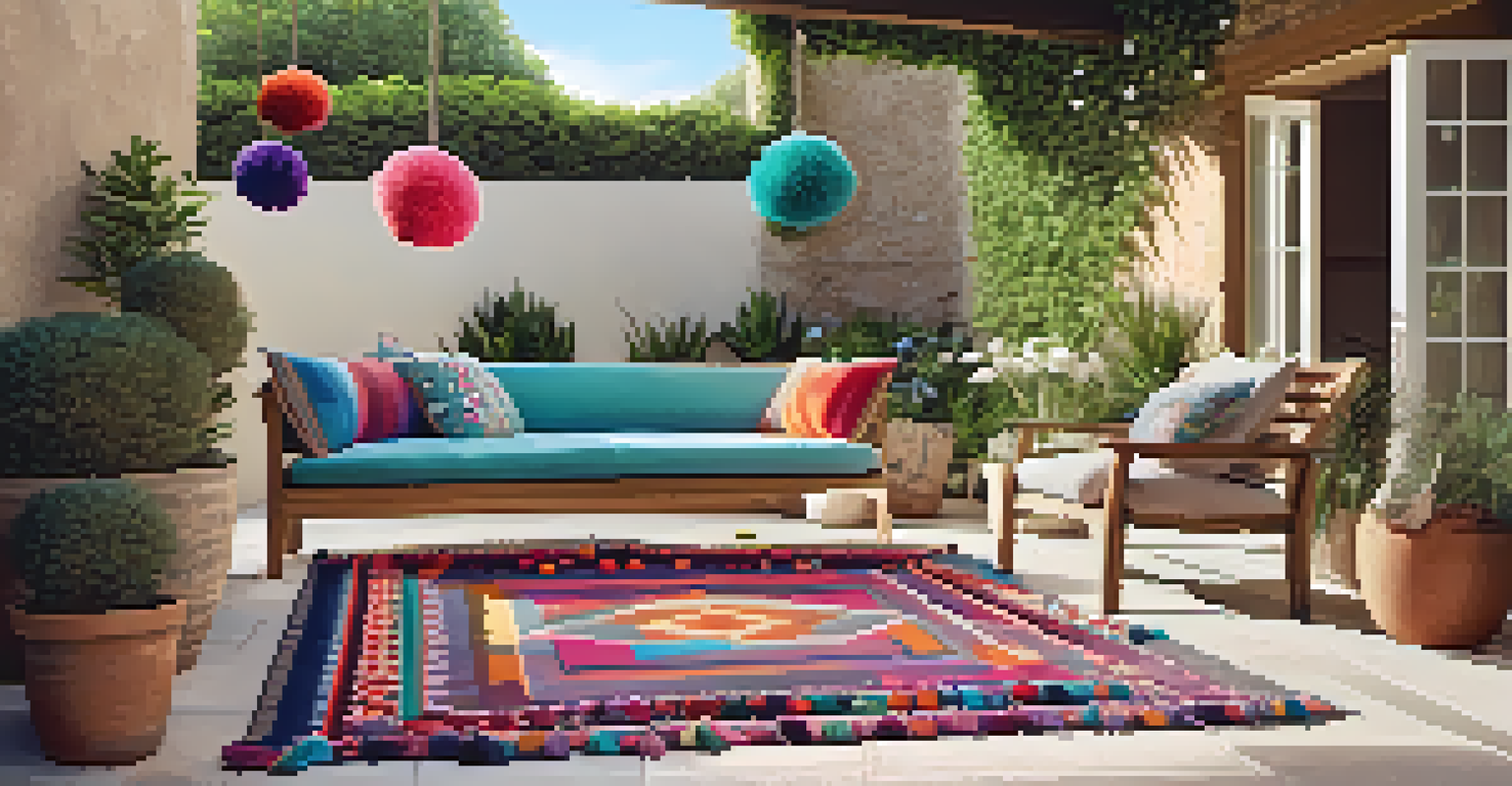Materials Needed for Effective Rug Making at Home

Choosing the Right Fabric for Your Rug
When it comes to rug making, the fabric you choose can make all the difference. Popular options include wool, cotton, and synthetic fibers, each offering unique benefits. Wool, for example, is durable and naturally stain-resistant, making it a great choice for high-traffic areas.
Creativity is intelligence having fun.
Cotton, on the other hand, is softer and more affordable, perfect for beginners or those on a budget. If you're looking for something more weather-resistant, synthetic fibers like nylon can withstand the elements, making them ideal for outdoor rugs.
Ultimately, your fabric choice should align with the rug's intended use and your personal style. Take some time to explore different options and find what feels best for your project.
Essential Tools for Rug Making
Having the right tools at your disposal can significantly enhance your rug-making experience. Basic tools include scissors, a tape measure, and a sturdy work surface. You might also want to invest in a rug hook or a latch hook, which can help you create intricate designs with ease.

A good-quality cutting mat is another essential, as it protects your surfaces and makes cutting fabric more manageable. If you're using a sewing machine, ensure you have the appropriate presser feet and needles for your chosen fabric.
Choose the Right Fabric Wisely
Selecting the appropriate fabric, such as wool for durability or cotton for affordability, is crucial to the rug's performance and aesthetic.
Don't forget about a good iron! Pressing your fabric before you start can help eliminate wrinkles and ensure your rug looks crisp and polished when finished.
Selecting the Right Yarn for Your Project
The yarn you select can greatly impact the final look and feel of your rug. For a plush, cozy texture, consider using bulky yarns or specialty fibers like chenille. These materials provide a soft touch that can elevate the comfort of any space.
The details are not the details. They make the design.
If you're aiming for a more structured design, opt for worsted-weight yarn, which is versatile and easy to work with. It's perfect for various knotting techniques and allows for a variety of patterns and textures.
Don't hesitate to experiment with different colors and textures to create a unique rug that reflects your personal style. Mixing and matching yarns can lead to unexpected and delightful results!
Choosing the Right Backing Material
Backing material is crucial for providing structure and durability to your rug. Common options include canvas, felt, or even non-slip rug pads. Canvas is a popular choice for its sturdiness, while felt can add a layer of softness to the underside.
If you're making a rug that will see heavy foot traffic, consider using a non-slip backing material. This will help keep your rug securely in place, preventing slips and falls.
Essential Tools Enhance Crafting
Having the right tools, from scissors to a good cutting mat, can significantly improve your rug-making experience and results.
Ultimately, the right backing material will depend on the design and functional goals of your rug. Make sure to choose one that complements your overall vision for the project.
Gathering Decorative Elements for Your Rug
Adding decorative elements can transform a simple rug into a striking centerpiece. Consider embellishments like tassels, pom-poms, or even fabric scraps to enhance your design. These little details can add personality and flair to your finished product.
You can also explore painting or dyeing your rug for a more personalized touch. Fabric paint or dye can help you achieve vibrant colors or intricate patterns that reflect your style.
Remember to balance decorative elements with functionality. While flair is important, ensure your additions don’t compromise the rug’s usability or comfort.
Tools for Finishing Touches on Your Rug
Once your rug is assembled, there are a few finishing touches that can elevate its appearance. A good pair of fabric scissors can help you trim any excess threads or uneven edges, ensuring a polished final look. A lint roller can also be handy for removing any stray fibers or dust.
If your rug has fringe or tassels, consider using a comb to fluff them up for added texture. This simple step can make your rug feel more inviting and cozy.
Caring for Your Rug Is Key
Regular vacuuming and proper storage techniques are essential to maintain the beauty and longevity of your handmade rug.
Finally, don’t forget to give your rug a good shake or vacuum to remove any debris. These finishing touches will ensure your rug looks its best when you finally lay it down.
Storing and Caring for Your Handmade Rug
Once you've completed your beautiful rug, it's essential to consider how to care for it. Regular vacuuming is key to maintaining its appearance and prolonging its lifespan. Make sure to use a vacuum with a gentle brush to avoid damaging the fibers.
If you need to wash your rug, always check the care instructions for your specific materials. Some rugs can be machine washed, while others may require spot cleaning or professional cleaning.

When storing your rug, roll it up rather than folding it to prevent creasing. Place it in a cool, dry place away from direct sunlight to avoid fading. Proper care will keep your handmade creation looking fresh and vibrant for years to come.
Inspiration and Resources for Your Rug-Making Journey
As you embark on your rug-making journey, finding inspiration can help fuel your creativity. Consider exploring social media platforms like Pinterest or Instagram, where countless crafters share their unique designs and techniques. You might just stumble upon your next great idea!
Joining online communities or local crafting groups can also provide valuable resources and support. Sharing your progress and learning from others can enhance your skills and keep you motivated.
Lastly, don’t forget to experiment and have fun! Rug making is as much about the process as it is about the final product. Embrace your creativity and enjoy the journey!